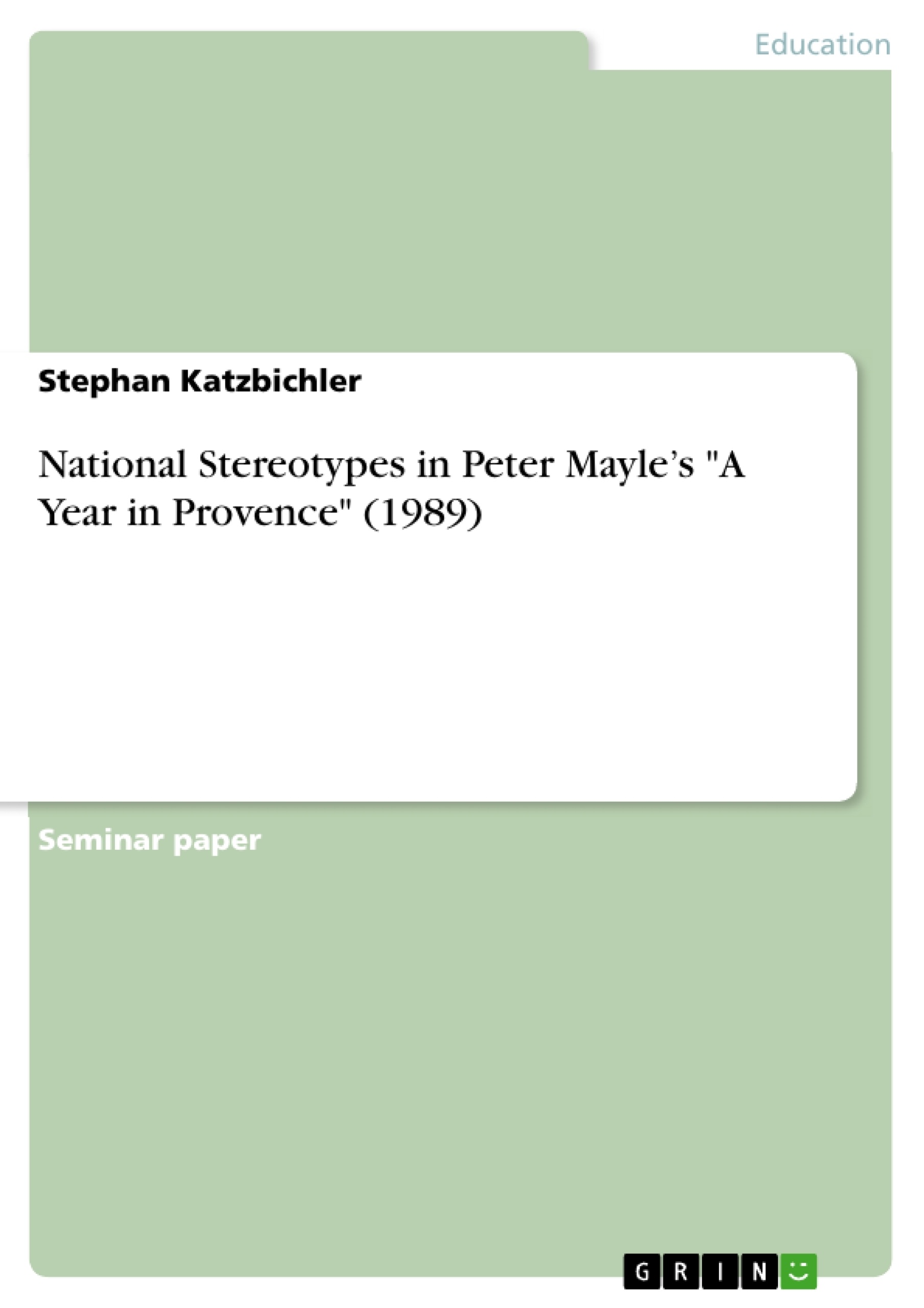Since every nation and its members have its own ideas about the world, about people and other cultures, stereotypes play an important role in intercultural communication. Thus,existing stereotypes about members of social groups or countries such as “women are fragile” or “Frenchmen are romantic” make it easily possible to conjure up a portrait of what certain cultures or groups are like (cf. Schaller; Stangor: 3). With stereotypical messages applying to all members of different cultures or social groups without regard for individual differences, communication between these members is often restrained. Due to living in multicultural societies, intercultural communication has become an important theme in a world of globalization and hence stereotypes have not become less important.In the first part of this paper the definition and basic characteristics of the term stereotype as well as the main features and effects of national stereotypes as a particular kind of stereotyping will be presented. Afterwards, in the second part, national stereotypes in literature will be outlined using the example of the travelogue A Year in Provence published by the British author Peter Mayle in 1989 focusing especially on its depiction and function. Finally, against the background of stereotyping playing an important role in intercultural and literary communication, the importance of appropriate and conscious dealing with stereotypes will be outlined.
Table of Contents
- 1 Introduction
- 2 Stereotypes in Intercultural Communication
- 2.1 Definition
- 2.2 Characteristics
- 2.3 National Stereotypes
- 2.3.1 Positive Effects
- 2.3.2 Negative Effects
- 3 National Stereotypes in Literature: Peter Mayle's A Year in Provence (1989)
- 3.1 Peter Mayle: A Year in Provence (1989)
- 3.2 Plot
- 3.3 Provence revealed in A Year in Provence
- 3.3.1 Gastronomy and Cuisine
- 3.3.2 Climate
- 3.3.3 Folk and Culture
- 3.4 Depiction of National Stereotypes in A Year in Provence
- 3.5 Functions and Effects of National Stereotypes in A Year in Provence
- 4 Dealing with Stereotypes
- 5 Works Cited
Objectives and Key Themes
This seminar paper aims to explore the role of national stereotypes in intercultural communication, particularly within the context of literature. By analyzing the travelogue "A Year in Provence" by Peter Mayle, the paper seeks to understand how national stereotypes are depicted, function, and influence the reader's perception of both the characters and the setting.
- The definition and characteristics of stereotypes in intercultural communication
- The nature and effects of national stereotypes, both positive and negative
- The portrayal and function of national stereotypes in Peter Mayle's "A Year in Provence"
- The importance of conscious and appropriate engagement with stereotypes in intercultural communication and literature
- The role of stereotypes in shaping reader perception and understanding of different cultures
Chapter Summaries
The first chapter introduces the concept of stereotypes and their significance in intercultural communication. The second chapter delves into the definition, characteristics, and effects of national stereotypes, examining both their positive and negative aspects. The third chapter focuses on the portrayal of national stereotypes in Peter Mayle's "A Year in Provence", analyzing the depiction of the French and the British characters and their cultural interactions. It also explores how stereotypes contribute to the overall narrative and reader experience.
Keywords
The main keywords and focus topics of the paper include stereotypes, intercultural communication, national stereotypes, literature, travelogue, Peter Mayle, "A Year in Provence," French culture, British culture, reader perception, cultural understanding, and conscious engagement with stereotypes.
- Arbeit zitieren
- Stephan Katzbichler (Autor:in), 2011, National Stereotypes in Peter Mayle’s "A Year in Provence" (1989), München, GRIN Verlag, https://www.hausarbeiten.de/document/262271


